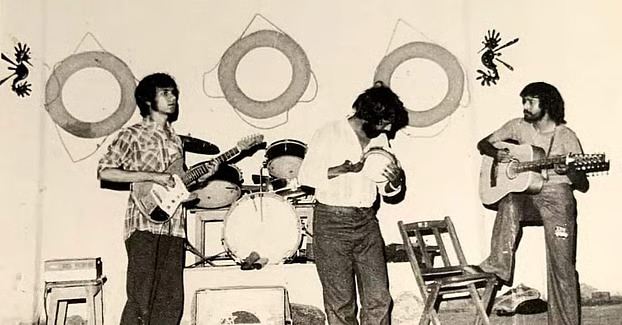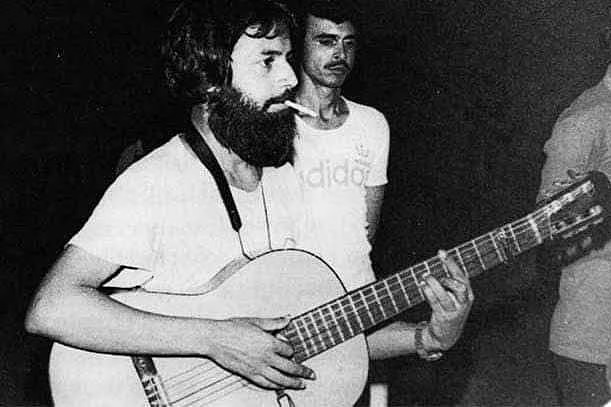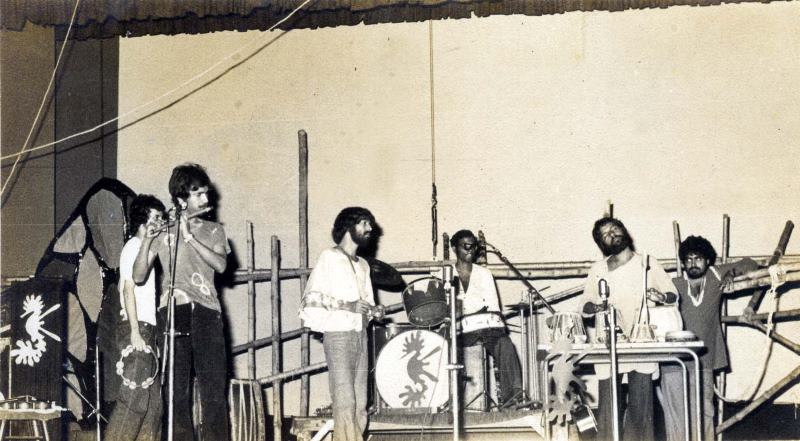Rock music is almost everyone’s favourite, which is gaining popularity among Gen Z as well! Did you know about India’s first rock band?
India’s first rock band was formed in Kolkata in the year 1975. The band led by Gautam Chattopadhyay was called Moheener Ghoraguli (which translates to Moheen’s horses.)
Apart from lead vocalist Gautam Chattopadhyay (voice, lead guitar, saxophone, folk instruments, lyrics), Moheener Ghoraguli also comprised Pradip Chatterjee (bass guitar, flute), Tapas Das (lyrics, voice, guitar), Ranjan Ghoshal (lyrics, emcee, visuals, media relations), Biswanath (Bishu) Chattopadhyay (drums, bass violin), Abraham Mazumdar (piano, violin), and Tapesh Bandopadhyay (voice, guitar).
What influenced their music
Their music drew from a wide variety of influences, including Bengali folk, Baul, urban American folk, and jazz. The band was known for fusing Western rock music with traditional Bengali folk and Baul music, creating a unique genre often described as “Baul jazz”.
‘Moheener Ghoraguli’ used various kinds of musical instruments such as guitar, saxophone, drums, along with ektara, violin, flute, etc., which were combined in Bengali rock music. Gautam Chatterjee created a new world of music by combining Baul, rock, Latin music’s tango-salsa. With the diversity of the lyrics and the stage performance, he gave the song a form that was revolutionary for the seventies.

Lyrics highlighted social issues
Moheener Ghoraguli through its lyrics spoke about social issues, urban culture, and the anxieties of modern life in Kolkata. Their lyrics were often described as personal and social in nature, similar to the urban folk movement led by Bob Dylan in the 1960s.
Their albums are titled “Shongbigno Pakhikul O Kolkata Bishayak” (1977), “Ajaana Uronto bostu ba Aw-Oo-Baw” (1978), “Drishyomaan Moheener Ghoraguli” (1979), “Aabaar Bochhor Kuri Pore” (1995), “Jhora Somoyer Gaan” (1996), and “Maya“ (1997).
Impact of Moheener Ghoraguli on Bengal’s music scene
Though they were not widely known during their active period (1975-1981), their music and approach to songwriting had a lasting impact on Bengali music, particularly in shaping the modern Bengali band scene that emerged in the late 1990s.
Moheener Ghoraguli’s legacy lies in their innovative blending of genres, their socially conscious lyrics, and their role in establishing a distinct Bengali rock music scene. They are remembered as a significant cultural force that challenged conventions and inspired future generations of musicians in Bengal.
Moheener Ghoraguli also deserves recognition for pioneering the genre of “Jibonmukhi gaan” or ‘Songs of ordinary life’, which was popularised by artists like Kabir Suman, Nachiketa, and Anjan Dutta in the 1990s.

Lead Vocalist Gautam Chattopadhyay and ‘Urban folk’ genre
The main horse of Mohiner Ghoraguli, the lead singer, songwriter and creator of popular albums, Gautam Chattopadhyay, was way ahead of his time. He formed Moheener Ghoraguli when the Bengali audience was not prepared for Bangla rock! Popularly addressed as Moni da, Gautam inspired for countless young singers not only in Bengal but also in neighbouring Bangladesh.
It was under his leadership that a new trend began in Bengali music in Kolkata in the mid-1970s. ‘Moheener Ghoraguli’ can be said to be a follower of the ‘Urban Folk’ genre that was popular around the world in the 1960s.
Going beyond the traditional sense of music, Gautam and his bandmates were able to bring politics-revolution, love, poverty, injustice, freedom—everything relevant to their songs at that time.
Gautam was allegedly involved in the Naxalbari movement at that time. Gautam Chattopadhyay’s involvement in this line of politics may have influenced his music.
Challenges faced by the band
In the seventies, there were very few people who could understand and accept such songs. Even the music companies of that time did not have the strength to retain this band. Hence, after its inception, Moheener Ghoraguli was active just for six years, from 1976 to 1981. After that, the band members got busy trying to make a living. Fans were left with only eight songs from the three albums before the band split in 1981, 15 to 20 shows, and a few unrecorded songs.

The revival of Moheener Ghoraguli
From the late eighties, Gautam Chattopadhyay noticed a new craze in Kolkata for their songs. The songs were being sung in colleges and universities and gaining popularity among Kolkata’s youth. Youngsters were playing guitar and humming their popular numbers. Fans started getting restless, everybody had only one question— till when will Moheen’s horses sleep?
Responding to this call from their growing fan base, the band delivered a comeback performance at 1995 Kolkata Book Fair. And ‘Moheener Ghoraguli’ very soon came up with the album ‘Abar Bocchor Kuri Pore’.
This time it was the turn of making new people work. Gautam Chattopadhyay, like a true guide, brought everyone forward and gave them a chance to sing. The album, edited by ‘Moheener Ghoraguli’, gained immense popularity among the audience. There was no looking back after that! Till 1999, a total of four albums were released under the label of ‘Moheener Ghoraguli’.
Moheener Ghoraguli numbers like “Tomay Dilam”, “Telephone” and “Prithibita Naki Chhoto Hotey Hotey” still resonates in the ears of listeners today. Fifty years have passed but Moheener Ghoraguli continues to live in the hearts of music enthusiasts, through their music.

